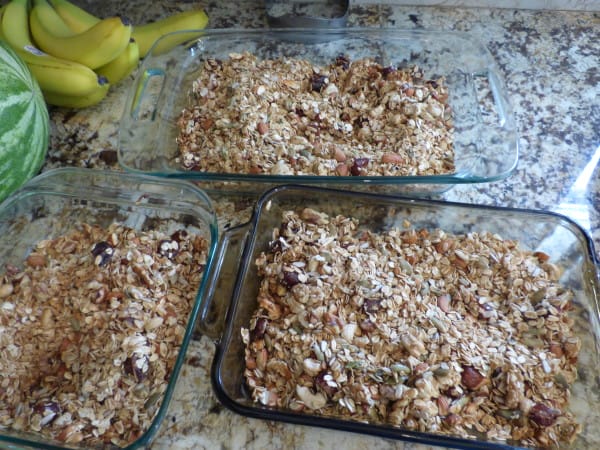Coughing is one of the most common reasons families seek medical support, especially during the school year when respiratory viruses seem to be everywhere. But while it can sound alarming, a cough isn’t always a bad thing. In fact, it’s often a helpful, protective reflex the body uses to clear irritants, mucus, or pathogens from the airways.
That said, not all coughs are created equal. Some are dry and irritating. Others are wet and rattly. And the way we support them should be tailored to what the body is trying to do. Understanding the difference between a wet and dry cough can help you make better decisions about care, avoid unnecessary interventions, and feel more confident supporting yourself or your child holistically at home.
What Causes a Cough?
At its core, a cough is a response to irritation in the respiratory tract (1). This could be from an infection, postnasal drip, dryness, or even reflux. In young children, coughs are especially common because their airways are smaller and more reactive and their immune systems are still learning to distinguish friend from foe.
Common causes include viral infections (like colds, RSV, flu, or COVID), environmental irritants (such as smoke, dust, or dry air), allergies, asthma or reactive airway conditions, acid reflux, or lingering post-viral inflammation. The sound and character of the cough offer valuable clues about the body’s current state and what kind of support may be most helpful.
This article may be helpful, too: Bronchitis, Bronchiolitis, Pneumonia, & Mycoplasma Pneumonia – An Integrative Perspective

What’s the Difference Between a Wet and a Dry Cough?
A wet cough, also called a productive cough, sounds gurgly, rattly, or phlegmy. It often signals that the body is trying to move mucus up and out of the lungs or throat. This kind of cough is common during or after a cold or respiratory virus, especially when there’s congestion, postnasal drip, or sinus involvement. It’s not something to suppress. In fact, when a wet cough is present, the body’s doing an important job: clearing out debris to protect the lungs and reduce infection risk.
A dry cough, on the other hand, doesn’t bring anything up. It usually sounds tight, barking, or hacking. Dry coughs are often caused by inflammation, irritation, or spasms in the airways. These might show up early in an illness before mucus forms or later when the infection has resolved but the airways are still sensitive. Dry coughs can also be triggered by allergens, cold air, or reflux. These coughs tend to be more disruptive at night and can linger for weeks after other symptoms improve.
Understanding which kind of cough you’re hearing can help you choose the most appropriate, gentle interventions.
This article may help, too: Understanding Croup: Causes, Symptoms, Remedies, & When To Seek Medical Attention
Holistic Support for Wet Coughs
When dealing with a wet cough, the goal is to help the body move mucus effectively and avoid it becoming stuck or overly thick. This means supporting hydration, thinning secretions, calming inflammation, and gently encouraging expectoration, without shutting down the cough reflex itself.
Warm liquids can be incredibly helpful here. Broths, warm water with lemon, herbal teas, or warm breast milk or formula in babies can all help thin mucus and soothe irritated tissues. Herbal allies like mullein and thyme are often used to support wet coughs. For young children, these herbs are often best given as glycerites or syrups specially formulated for their age.
Steam is another powerful tool. A warm bath, steamy shower, or humidifier can help loosen congestion and relieve tightness. In babies, this often works best when combined with upright snuggles or babywearing, allowing gravity to assist drainage. For older children and adults, a steamy bathroom or herbal steam inhalation can provide fast relief.
To learn more about steam inhalation, read this article: Botanical Steam Inhalation to Reduce Congestion & Soothe Coughs
Movement also plays an important role in clearing a wet cough. Gentle bouncing, stretching, or even walking can help mobilize mucus. In babies, simply holding them upright and gently patting their back can do wonders. The key is not to suppress a wet cough with medications unless advised by a healthcare provider. Suppressing the urge to cough in these cases can trap mucus in the lungs and increase the risk of secondary infection (2). The focus should be on supporting the body’s natural elimination process, while keeping the child as comfortable as possible.
You may like this article, too: Understanding Croup: Causes, Symptoms, Remedies, & When To Seek Medical Attention

Holistic Support for Dry Coughs
When a cough is dry and irritating, the body needs a different kind of help. Instead of clearing mucus, the priority becomes calming inflammation, soothing irritated tissues, and reducing the sensitivity of the cough reflex. This is especially important at night when dry coughs tend to interrupt sleep for the whole family.
Warm, moist air is still helpful here but so are demulcent herbs (herbs that create a soothing mucilaginous coating). Marshmallow root and slippery elm are two examples often used in herbal remedies to ease dry, scratchy throats. For children over age one, raw honey is one of the most effective natural remedies available. A teaspoon before bed can coat the throat and reduce nighttime coughing.
For some families, homeopathic remedies can offer additional support when chosen carefully based on the child’s overall presentation. Read this article to learn more: 12 Homeopathic Remedies for Coughs
When to Seek Medical Attention
Most coughs, especially those caused by viral infections, resolve on their own within 1–3 weeks. But certain red flags indicate it’s time to get help. These include difficulty breathing, wheezing, bluish lips or nails, chest pain, a cough that causes vomiting or exhaustion, signs of dehydration, or a cough that persists beyond 3 weeks without improvement.
In babies under 3 months, any cough should be taken seriously and evaluated by a healthcare provider.
Croup, whooping cough, asthma, RSV, or pneumonia can sometimes mimic common viral symptoms in the beginning. Trust your instincts: if something feels off, it’s always better to check in.
Dr. Green Mom’s Soothing Drink For Scratchy Throats & Dry Coughs
This gentle herbal “tea” can help calm dry, irritated throats and ease nighttime coughs.
⏲️ Prep Time
5 minutes
Yields
1 serving
Ingredients
- 1 dropperful of Tummease™
- 1 teaspoon of Ginger-Ease™
- 1-3 teaspoons of raw honey (for children over age 1)
- 6-8 oz warm water
- Optional: squeeze of lemon or lemon wedge
Directions
- Heat water until warm but not boiling.
- In a mug, combine Tummease™, Ginger-Ease™, and raw honey.
- Pour warm water over the mixture and stir well.
- Add a squeeze of lemon if desired.
- Sip slowly while warm
Summary
Coughing is a natural reflex that helps clear the airways, but not all coughs are the same. Wet coughs are phlegmy and help the body eliminate mucus, while dry coughs are often triggered by irritation and tend to linger, especially at night. Supporting occasional coughs holistically means choosing the right tools for the cough you’re dealing with. Tools include hydration, steam, and gentle herbs like mullein and thyme for wet coughs, and soothing demulcents like marshmallow root, slippery elm, and raw honey for dry ones.
References:
- Sharma S, Hashmi MF, Alhajjaj MS. Cough. 2023 Aug 8. In: StatPearls [Internet]. Treasure Island (FL): StatPearls Publishing; 2025 Jan–. PMID: 29630273.
- Weinberger M, Lockshin B. When is cough functional, and how should it be treated? Breathe (Sheff). 2017 Mar;13(1):22-30. doi: 10.1183/20734735.015216. PMID: 28289448; PMCID: PMC5344044.


